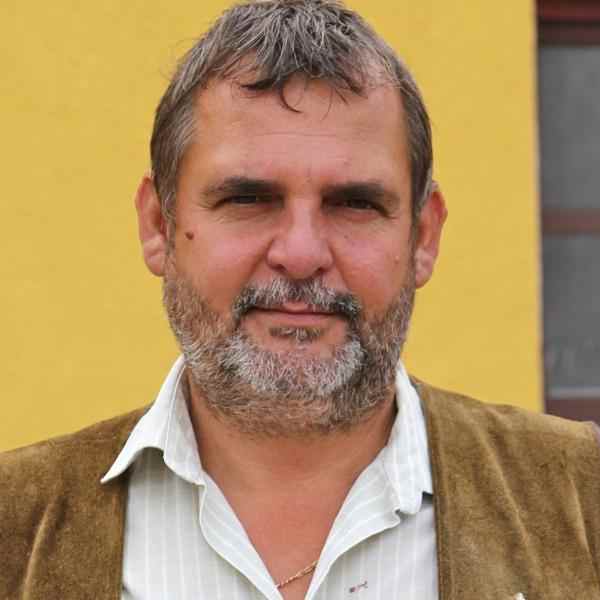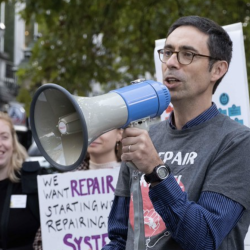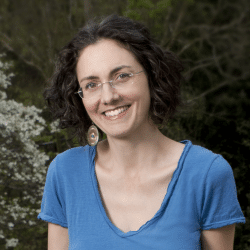Introducción
Levente Viszló is reinventing nature conservation for post-communist Hungary by rolling out a series of new institutions, mechanisms and approaches that are rooted in citizen action and local level private-public partnerships.
La idea nueva
As Hungarian communism unraveled in the 1980s, Levente Viszló saw a unique opportunity to draw ordinary local citizens into his life’s passion—nature conservation. As a park ranger, Levente projects a powerful conviction about the government’s responsibilities to protect the land. His years in the field, however, have also convinced him that the environment will only be preserved when local citizens share in the responsibility to care for it.
Drawing on these two principles, Levente is reinventing the field of nature conservation for post-communist Hungary by rolling out a series of new institutions, mechanisms and approaches that are rooted in citizen action and local level private-public partnerships in his home region of the Vertes. As a national parks ranger in the 1980s, he worked inclusively with diverse citizen stakeholders—including recreational hunters, farmers, nature lovers and public agencies—living in the ecologically diverse marshes and mountains of the Vertes region to build a powerful local constituency to protect the Vertes from inappropriate “development.”
This first principle paid off when he succeeded in reversing state-led efforts to drain the Vertes wetlands, which are home for four endangered species, and the second when the citizens successfully opposed the placement of electricity pylons through the region.
When successive waves of public land reclassification and privatization began after the collapse of communism, Levente was again prepared. He and his citizen volunteers succeeded—through field activities to protect endangered species combined with local level political advocacy—in getting large areas proclaimed as “protected areas” and mobilized foreign funding to purchase other ecologically significant parcels in the name of the country’s first conservation land trust. He has supported these and other conservation measures with a growing public and schools education program, including the publication of a landmark book, One Little Drop of Hungary, which ensures a steady stream of new volunteers to his cause.
Levente is currently consolidating these conservation and education activities in the Vertes Mountain Public Foundation for Nature Conservation and the Vertes Natural Science Museum and has begun to export his Vertes conservation model throughout Hungary and the wider region.
El problema
In the communist era, responsibility for nature conservation fell squarely on the state. According to the logic of so-called socialist modernization, which characterized the whole of East and Central Europe, this meant in practice that industrialization was trumps and the natural environment was viewed almost exclusively as an instrument to serve material concerns. Economic organization paid almost no heed to the environment, with the result that the formerly communist countries have become justly infamous for some of the worst levels of pollution and natural resource degradation in human history. Where land was in fact conserved, it was more because it had not yet been exploited than because a conscious decision was taken to protect it.
With the collapse of communism in 1989 and the beginning of Hungary’s entry into the globalized free market economy, another set of problems became apparent. The development model now being foisted on Hungary from the West makes few concessions to notions of sustainability in its single-minded drive for growth. For those concerned with conserving fragile ecosystems, two immediate threats loom large. First, the state was and is under tremendous pressure to sell off its land to the “highest” economic use. Second, those working Hungary’s land in ways that might be ecologically sustainable face “free market” competition with large-scale agribusiness, which poses a different kind of threat to Hungary’s natural resource base. The situation is compounded by the fact that the ecological consciousness of the average citizen is very low. There is little experience in the private voluntary associations of civil society that can constitute a popular constituency for sustainable approaches to development. Those best organized to command resources and move ahead are those who accept the “growth model” and act in concert with Western corporations. Those advocating the more complex “sustainability model” must overcome the powerful momentum of Western corporations and the consumerist mentality that they imbue.
La estrategia
Levente’s goals are narrowly focused. First, to conserve (protect and manage) ecologically important places, and second, to raise popular understanding of the region’s ecology. Strategically, Levente believes that the only way to proceed is through struggles around specific places or species; it is in the specifics that it is possible to “beat the odds” of Western materialism. By adding up ten thousand local struggles one can begin, he argues, to describe an alternative model of human society based on notions of ecological sustainability.
Through seventeen years of work to preserve the fragile wetlands ecology of the Vertes Mountains in south-central Hungary, Levente has elaborated a strategy with four interrelated prongs, three local in character and one national in character.
At the national level, Levente argues for the necessity of local responsibility for nature conservation. He has successfully advocated for legal reforms to decentralize authority to local governments to proclaim protected areas and in other ways assume responsibility for natural resource management. This may be the single most important change in public policy in Hungary for both the protection of the natural environment and the development of civil society of this half-century.
In the Vertes region, Levente has (1) ceaselessly educated the public about “their” ecology; (2) mobilized and organized concerned citizens on an inclusive basis to find ways to manage their ecology sustainably; and (3) encouraged local government authorities to take the lead in finding sustainable land use options. In pursuing these strategies, Levente has initiated various conservation campaigns (against destructive practices or to save threatened species), established new environmental action groups (most enduringly, the Vertes Mountain Public Foundation for Nature Conservation and the Vertes Natural Science Museum) and encouraged a number of local authorities to collaborate and declare much of the Vertes region as “protected.” He has also worked through the Vertes Mountain Public Foundation for Nature Conservation to place additional key parcels of the Vertes in nature conservation trust and mobilized a growing number of farmers to accept various ecologically minded constraints on the way that they may exploit their land. Citizen volunteer groups support them with various field level support activities (such as clearing destructive exotic flora) and the Foundation honors their achievements with annual public awards.
One of the keys to Levente’s success is his nonadversarial, inclusive, win-win approach. He believes that there is usually a way to accommodate anyone and everyone who has a long-term interest in the environment. He has also found that by working in this way it is possible to develop the kinds of mutually reinforcing activities that can provide high levels of satisfaction to the various stakeholders. One “case study” from Levente’s growing portfolio illustrates this aspect of his work.
In the mid 1980s the national electric utility proposed putting a major power line through the Vertes marshland. Levente determined that this would threaten marshland (via drainage activities associated with the construction) and create a permanent hazard for birds, notably the endangered Salker Falcon (Falco Cherrug), so he mobilized local farmers and bird lovers to oppose the plan. He was able to get a legal injunction against the project, but the utility proceeded to construct the power line illegally. Levente studied the impact of the pylons and found that his worst fears were confirmed. Falcons and other birds were electrocuted when they tried to build nests on top of the pylons. He discovered that the Salker Falcon was particularly vulnerable. It doesn’t build its own nests but takes over nests built by other birds. Due to the design of the pylons, the nests on them are not big enough to hold Salker Falcon eggs, which tend to fall out. While he was lobbying to have the pylons removed, he designed an artificial nest that could be fitted on the pylons and began promoting this nest to the utility. The utility eventually agreed to try the nests, which proved popular with the falcons. Citizen groups monitored the nests to protect them from poachers (who sold the nestlings to falconers on the international black market). Gradually, as the utility came into its new role as a protector of the Salker Falcon, its attitude changed. It agreed to remove the poles from the fragile ecosystem (with Levente organizing the costs to be met one third each from the local water authority, the local government and the central government environmental agency), and it embarked on a campaign with Levente to incorporate nesting sites into pylon construction nationally. All parties are celebrating this story, but perhaps none more than the Salker Falcon. In 1991, Levente knew of one Salker Falcon nest in the entire country. In 1993, surveys by citizen groups and utility company workers found eighteen Salker Falcons using the pylon nests. In 1996, Levente personally counted 70 nests in the Vertes region and has reports of hundreds throughout the country.
With ongoing programs to buy ecologically important land, or proclaim it “protected,” and to conduct ecology education in schools and through popular publications, Levente is now establishing the Vertes Natural Science Museum to consolidate his work. The Museum will provide a permanent physical “home” for Vertes conservation and serve as the foundation from which the Vertes conservation model may be shared throughout Hungary and beyond. Its local activities will concentrate around school and wider public education.
Looking ahead at the coming challenges, Levente is concerned about the impact of integration into the European Union on Hungarian farmers. He foresees a significant decline in domestic livestock, which may make important tracts of land vulnerable to far more destructive uses. He is actively working with farmers and others to consider alternative, sustainable livelihoods.
La persona
Levente was born in the Vertes Mountains and it is there that he plans to be laid to rest. His love for nature was arrived at through his childhood love of the natural world around him, particularly birds, which he began drawing as a young child.
His belief in the integrity and important of local government may derive from his parents, who were teachers. His father was an important local political leader who, despite the fact that he was staunchly independent from the Party, served as City Council head.
Levente was encouraged to pursue the natural sciences by his parents and other teachers. He gained entrance to university, where he majored in biology. He began to study his beloved Csikvar Meadow in Vertes “scientifically” while at university. Using his research to back up his case, he successfully lobbied the government to proclaim the meadow a protected area (the first part of the Vertes to be officially protected). He failed to complete his final exams, however, as they conflicted with this first Vertes conservation campaign: Levente was in the field physically protecting birds when the exams were held.
His employment as a parks ranger in the Vertes began in 1980. Levente is the recipient of many awards for his work, including the Fejer County Award for his protection of the Csikvar Meadow, The Award of the Human Environment from Pro Natura and the Istvan Chernel award of the Hungarian Bird Research and Environmental Protection Association.
Levente regrets that because of the growing demands of school that his children are unable to spend as much time with him in nature as in the past, although plans for a crèche at the new museum may help him to integrate the different parts of his life more fully.




